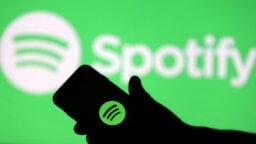Spotify has attracted 2.5 million paying subscribers in under two months to reach yet another big milestone in its growth: 15m paying subs and 60m total active users.
The achievement, announced this afternoon, was surpassed “before 2014 turned into 2015”, meaning the company added an impressive 10m active users in just a month-and-a-half, after announcing 50m on November 11.
Before that, the company took six months to add its previous 10m users, from May 2014, when it announced 40m.
The acceleration in the company’s growth is food for thought for figures at major labels who are beginning to question the worth of Spotify’s free/ad-supported tier.
The company argues that without this entry point, it wouldn’t be able to convert anywhere near as many users into paying customers
As Daniel Ek said in November: “Not all free music is created equal – on Spotify, free music is supported by ads, and we pay for every play. Until we launched Spotify, there were two economic models for streaming services: all free or all paid, never together, and both models had a fatal flaw. The paid-only services never took off (despite spending hundreds of millions of dollars on marketing), because users were being asked to pay for something that they were already getting for free on piracy sites.
“The free services, which scaled massively, paid next to nothing back to artists and labels, and were often just a step away from piracy, implemented without regard to licensing, and they offered no path to convert all their free users into paying customers. Paid provided monetization without scale, free reached scale without monetization, and neither produced anywhere near enough money to replace the ongoing decline in music industry revenue.
“We had a different idea. We believed that a blended option – or ‘freemium’ model – would build scale and monetization together, ultimately creating a new music economy that gives fans access to the music they love and pays artists fairly for their amazing work. Why link free and paid? Because the hardest thing about selling a music subscription is that most of our competition comes from the tons of free music available just about everywhere.
“Today, people listen to music in a wide variety of ways, but by far the three most popular ways are radio, YouTube, and piracy – all free. Here’s the overwhelming, undeniable, inescapable bottom line: the vast majority of music listening is unpaid. If we want to drive people to pay for music, we have to compete with free to get their attention in the first place.
“So our theory was simple – offer a terrific free tier, supported by advertising, as a starting point to attract fans and get them in the door. And unlike other free music options – from piracy to YouTube to SoundCloud – we pay artists and rights holders every time a song is played on our free service. But it’s not as flexible or uninterrupted as Premium.
“If you’ve ever used Spotify’s free service on mobile, you know what I mean – just like radio, you can pick the kind of music you want to hear but can’t control the specific song that’s being played, or what gets played next, and you have to listen to ads. We believed that as fans invested in Spotify with time, listening to their favorite music, discovering new music and sharing it with their friends, they would eventually want the full freedom offered by our premium tier, and they’d be willing to pay for it.”Music Business Worldwide






